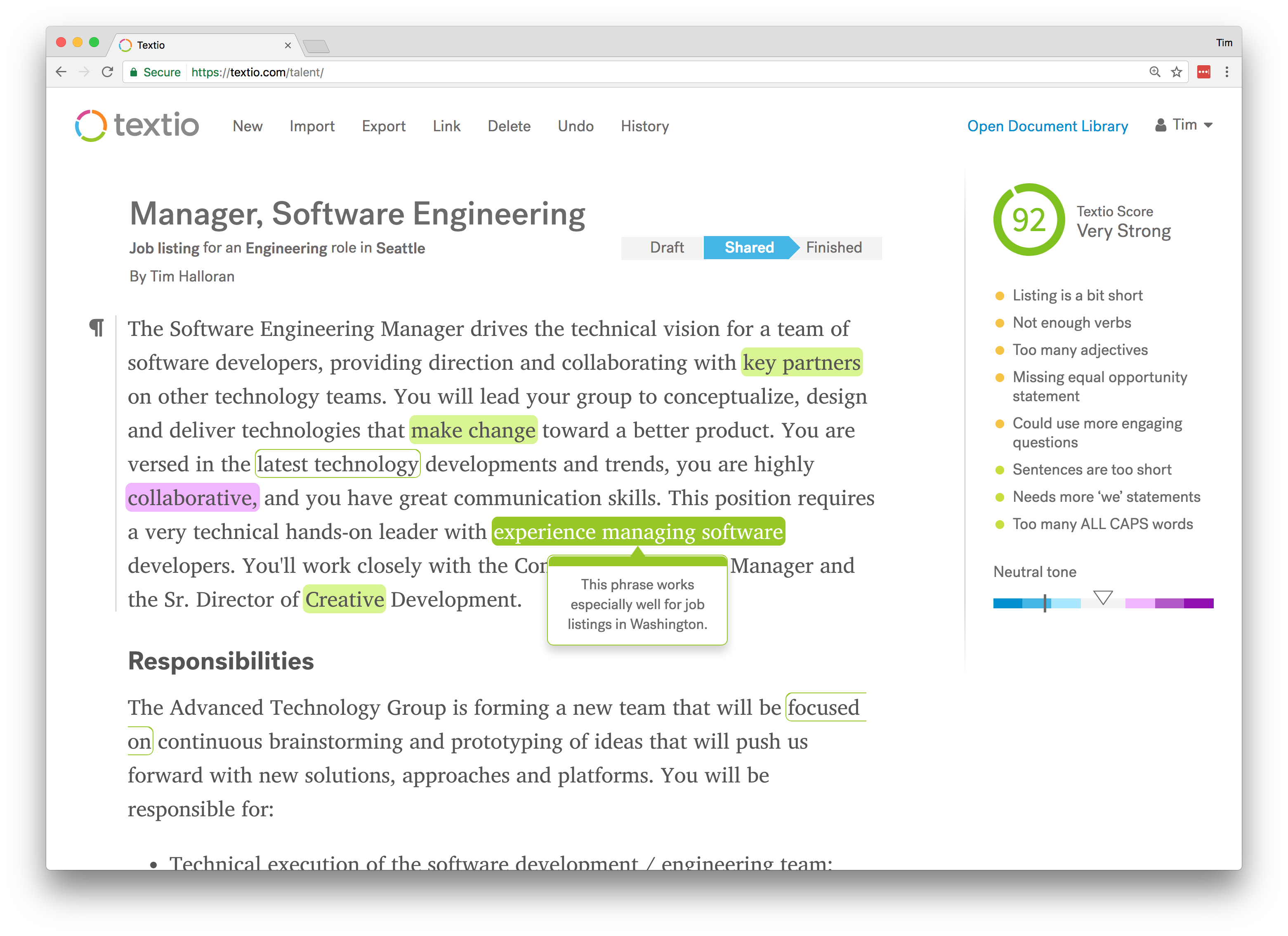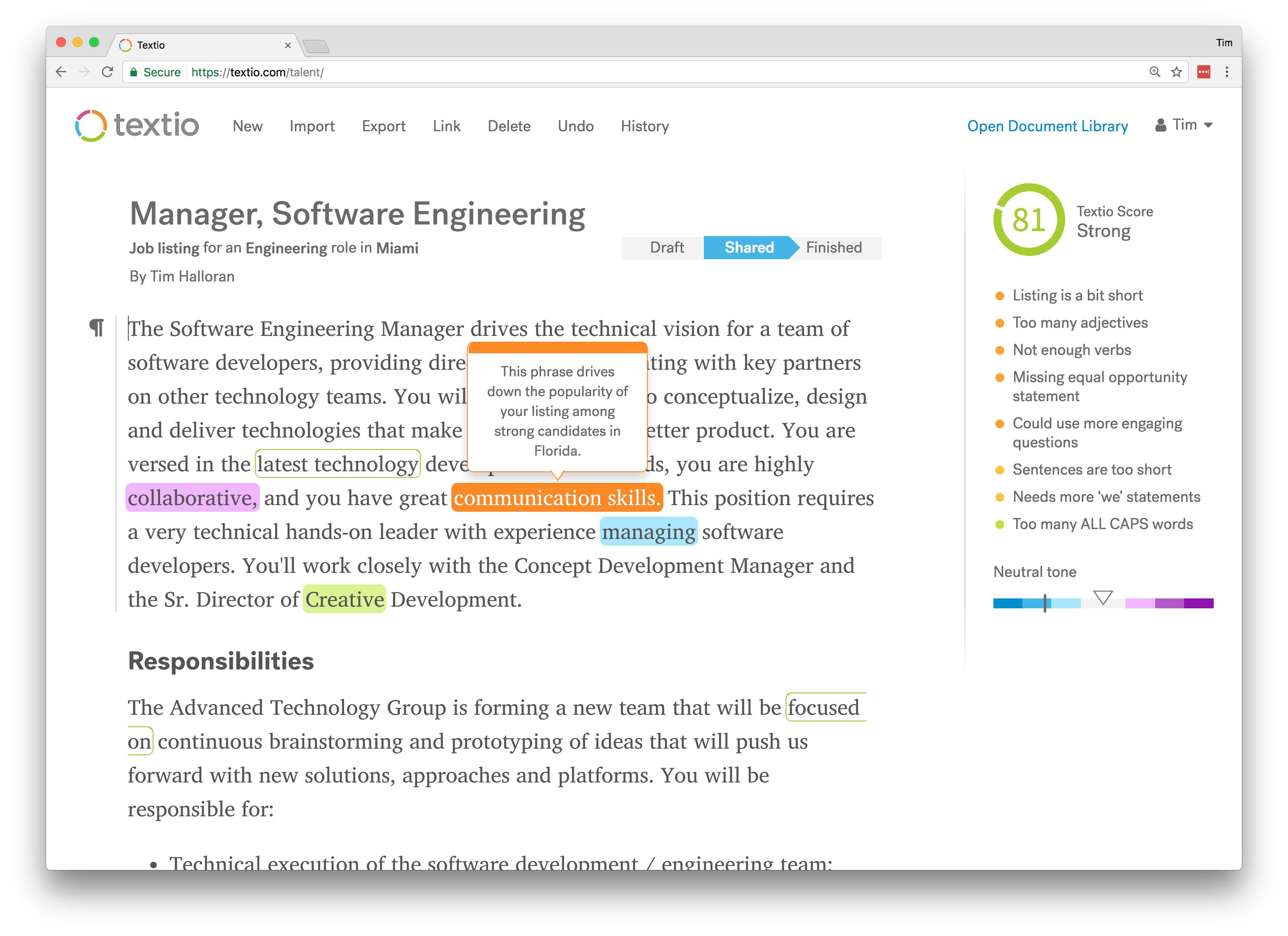The power of location in job posts

How many times have you put “good communication skills” as a requirement in a job listing? Well, you’re doing it wrong — but only if you’re trying to hire in Florida.
Just a couple of weeks ago, Textio released a big bundle of feature improvements as part of our July Update, and among them was an upgrade to our location-specific editing guidance for U.S. cities. With millions of new job postings and their hiring outcomes being added to Textio every month, our predictive engine has been getting a lot smarter about how the most effective hiring language can change across cities. Now it really shows.
For example, this post for a Software Engineering Manager role gets a very strong Textio Score of 92—if the job is located in Seattle.

But if the exact same posting is used for a role in Miami, it only scores an 81. And those 11 points could make the difference between hiring a good candidate or a great one.
Here’s why: Textio’s perpetual analysis of hiring language surfaces three key phrases in the document that will statistically improve your chances of a strong hire in Seattle:
- key partners
- make change
- experience managing software
You can see in the screenshot above that those phrases are highlighted in green, and when you hover on one, Textio’s editing guidance lets you know that the phrase will help this job listing perform better in Washington.
Florida, on the other hand, doesn’t see any lift in performance from those same three phrases, so if you change the location of the job to Miami, those green highlights disappear:

To make matters worse, Textio also finds a phrase in the job listing that is associated with lower hiring performance in Florida (but not Washington):
- communication skills
We could speculate about reasons why a phrase like this tends to make jobs fill more slowly in Florida, but there’s not much point: the data is the data.
When you’re competing for the best talent in your city and trying to convince local candidates to apply for your jobs, every word counts. We’ve already seen how influential phrases evolve over time, and now we’re seeing more clearly how that language can also change from city to city.